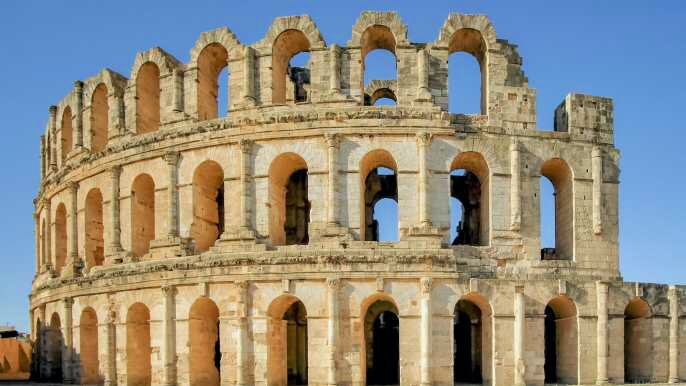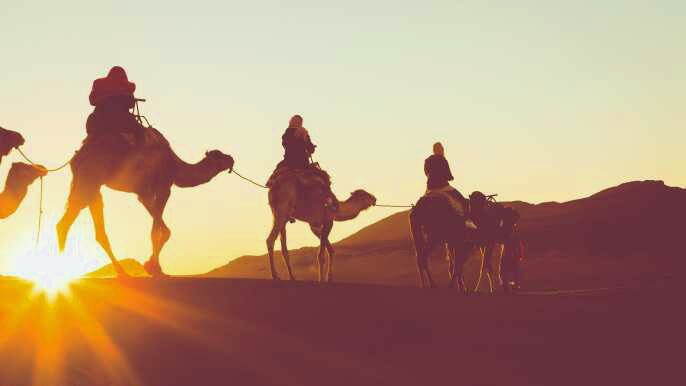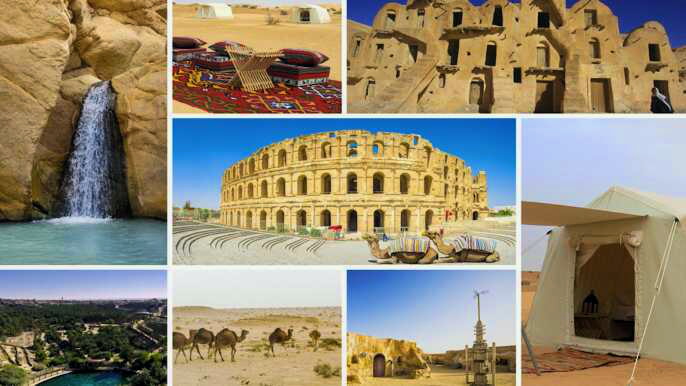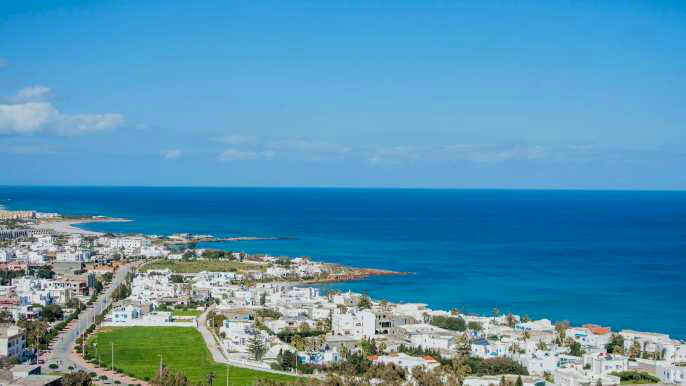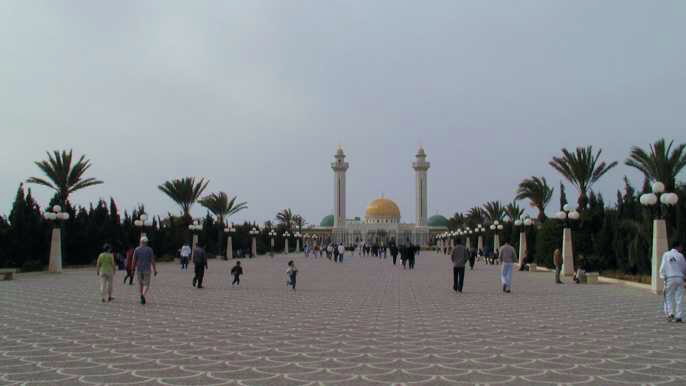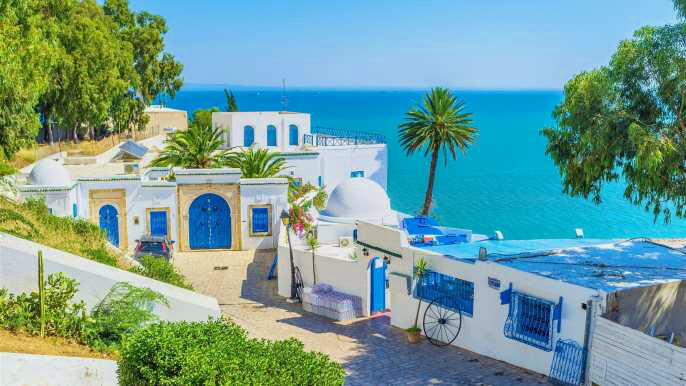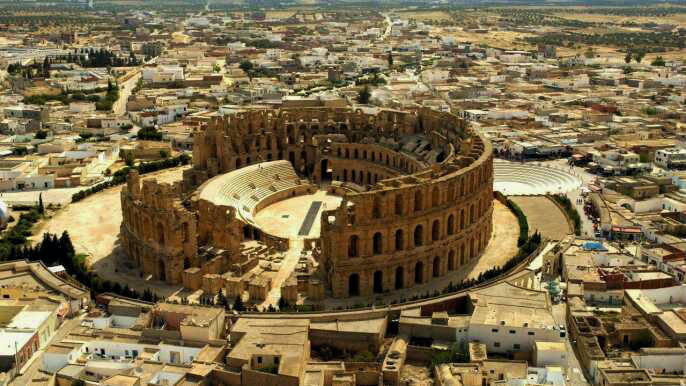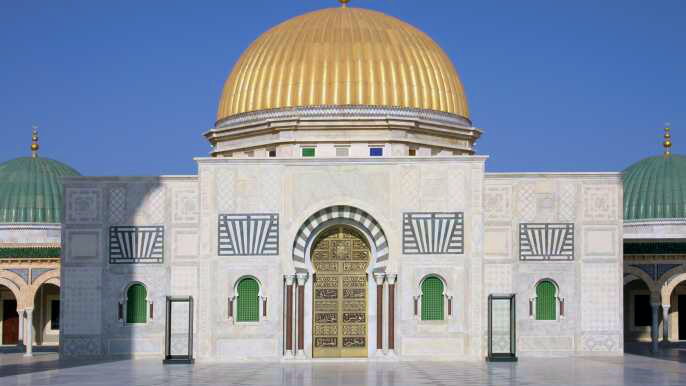Whether you're looking for a relaxing beach holiday or an action packed adventure, Tunisia has something to offer you. It's the northernmost country in Africa, and is a great place to get a taste of African life. The country is bordered by Algeria to the west, Libya to the southeast, and the Mediterranean Sea to the north.
Hammamet
Located in the south of the Cap Bon peninsula, Hammamet is a picturesque tourist destination. It is home to a rich heritage, beautiful beaches, and warm seawater. It was once a fishing village, but is now a thriving tourist resort. Hammamet is one of the most popular tourist destinations in Tunisia.
Visitors can explore the Kasbah, which is a fortress that was built centuries ago. Its walls have been attacked and strengthened many times, but they still stand strong. Inside, visitors can take a tour of the ancient cannons and tombs. The upper level of the Kasbah has amazing views of the Mediterranean Sea.
Visitors can also visit the Koranic school, which is open for tourists every day. It is home to a variety of artifacts and ceramics. It also has a museum, which exhibits jewelry and coins.
The Hammamet Cultural Centre is located in the southern part of the town. It is a good place to visit for architecture buffs. It also hosts the International Festival of Music and Drama. This is a popular event that attracts a lot of tourists each year.
Visitors can also explore the town's historic Medina. The city was built on top of a steep cliff, and the medina was originally a small fishing village. The medina is still in good condition, and there are many buildings dating from the 1500s. The medina is lined with streets with souks selling clothes and artifacts. The streets are also lined with souvenir stalls.
Visitors can also visit the Sidi Abdel Kader Mosque, which was built in 1798. It is located right beside the Great Mosque. The Sidi Abdel Kader Mosque is a madrassa, meaning that it is open to both Muslim and non-Muslim visitors.
El Jem
During the Roman Empire, El Jem was the richest city in Antiquity. It was also a commercial crossroads. The ruins of El Jem offer visitors a glimpse of Roman power in North Africa.
The El Jem Coliseum is one of the largest Roman buildings in Africa. It is a UNESCO World Heritage Site since 1979. It is also home to the El Jem Museum of Archaeology. The museum features a collection of mosaics from El Jem and some of the remains discovered in the region. The museum also has a reconstruction of the ancient city.
The ruins of El Jem are situated in the present day town of Mahdia, Tunisia. The town has a modern feel, allowing visitors to combine ancient history with modern amenities.
The El Jem Amphitheatre is one of the most famous sites in Tunisia. The amphitheatre is surrounded by a variety of shops and restaurants. It is located in the centre of the city. It was built in the 3rd century under proconsul Gordian. The amphitheater was used for gladiator shows and small chariot races.
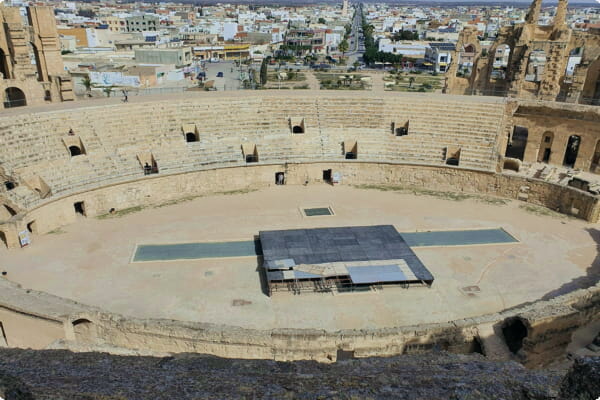
The facade of the amphitheater is made up of engaged columns. These columns are Corinthian and Composite. The amphitheater also had a pipe system that distributed rainwater. The amphitheater was also used as a cistern. In addition, the amphitheater was used as a fortress.
The amphitheater is a UNESCO World Heritage Site. The amphitheatre was also used for filming scenes of gladiators. The amphitheater's walls are very well preserved. They are up to 35 metres in places.
The best preserved section is the south side. The ruins are accessible for climbing. Visitors can also take a look at the lower levels where gladiators and wild animals would have been housed.
Carthage Archaeological site
Located in Tunisia, Carthage was an ancient city that was once rival to Rome. It was once the most important trading hub in the Ancient Mediterranean. The city's location on the north coast of Africa offered easy access to the Mediterranean trade routes. The city also had a large mercantile trade harbour and two artificial harbors.
The ruins of Carthage are a UNESCO World Heritage Site. They include the ancient Punic ports, a Punic temple, and a Punic tophet. These remains are among the best preserved from the time.
The archaeological site is also home to the National Museum of Carthage, which has displays of artifacts from both the Punic and Roman periods. The museum is located on Byrsa Hill. The museum displays artifacts from both periods, as well as a timeline of the city's destruction.
Carthage was a powerful city, with walls that were 37 km long. It was a great trading port, with 200 docks. Eventually, it was eclipsed by Tunis. In 705, Carthage was captured by Arabs. After its capture, the city was razed.

Carthage's ruins are still impressive, and a trip to the area is worth it. The ruins can be viewed by taking a guided tour. The archaeological park offers a great way to see the layout of the Roman Carthage's residential quarter.
The archaeological site also offers a great view of the Gulf of Tunis. Many of the ruins have views of the sea. If you have time, you should visit the Punic ports. The Carthage National Museum is a good place to start a tour of the city, as it contains displays from both periods.
The city's Roman Baths are another great place to visit. This bath complex was built during the reign of Roman Emperor Antoninus Pius.
Sousse
Located on the eastern coast of Tunisia, Sousse is a major tourist destination. The city has two faces, a beautiful historical medina, and beautiful beaches. It is also home to some remarkable Middle Ages monuments.
The Medina of Sousse is a UNESCO World Heritage Site. This historic area is characterized by narrow streets and arches, modeled on the traditional Tunisian buildings.
The ancient city of Sousse was established during the Aghlabid dynasty. It was initially intended to serve as a port for Kairouan. The Aghlabids built the city walls and the Great Mosque. The city was eventually conquered by the Arab forces of Uqba ibn Nafi in the seventh century.
The main landmark of Sousse is the Tower of the Ribat, a citadel built in the eighth century. It is one of the best examples of seaward-facing fortifications built by Arabs. The ramparts were built to protect the city against foreign sea invaders.
The Archeological Museum of Sousse is one of the best places to visit in the city. It contains artifacts from the Sahel region and the Punic and Roman periods. It has a cafeteria and gift shop.
Sousse's main economic pursuits are olive oil processing, cotton textile milling, and automotive parts manufacture. It also has a number of high schools. The Pilot College of Sousse, Constantine College, and Abdelaziz-El-Bahi high school are in the city.
There are many markets in the city, and many of them are still in their original state. Several theaters and necropolises are also still intact.
During the colonial period, Sousse had numerous oil wells. Today, agricultural activity has decreased, while fishing and tourism are the main economic pursuits.
Kairouan
Located in the heart of the High Steppes region of Tunisia, Kairouan is one of the most beautiful and beautiful places in Tunisia. A medina that was built by the Aghlabid dynasty, Kairouan is home to one of the oldest mosques in North Africa.
The city's mosque was built by the Aghlabid emirs in the ninth century. The mosque is considered a holy place. The minaret is inspired by the lighthouse of Alexandria.
The mosque is made from marble and porphyry and has antique columns. It has a prayer hall and a large courtyard. The mosque was the seat of the governors who were appointed to administer the area.
The mosque was also a school and a forum for theological discussions. There are still many works of art and architecture from this time period that have been preserved in Kairouan.
In the early 18th century, the Husseinites built numerous towers around the city. The Aghlabids also built magnificent palaces in the city. The emirs also constructed numerous monuments.
The Aghlabid dynasty also built many mosques and libraries in the city. There is a museum in Kairouan that displays artifacts from the golden age.
Kairouan is also the site of a holy shrine. It is dedicated to the companion of the Prophet, Abo Zomaa al-Balaoui. Abo Zomaa al-Balaoui was called "the barber". He was killed in a battle against the Byzantine army in 655.
Kairouan's medina is home to the Great Mosque. The mosque has a soaring minaret. It is considered to be one of the most important pilgrimage sites in Islam.
The Lalla Rihana Gate is also a notable place in the city. The gate is built in a Hispano-Mauresque style. It sits on the eastern side of the mosque.


